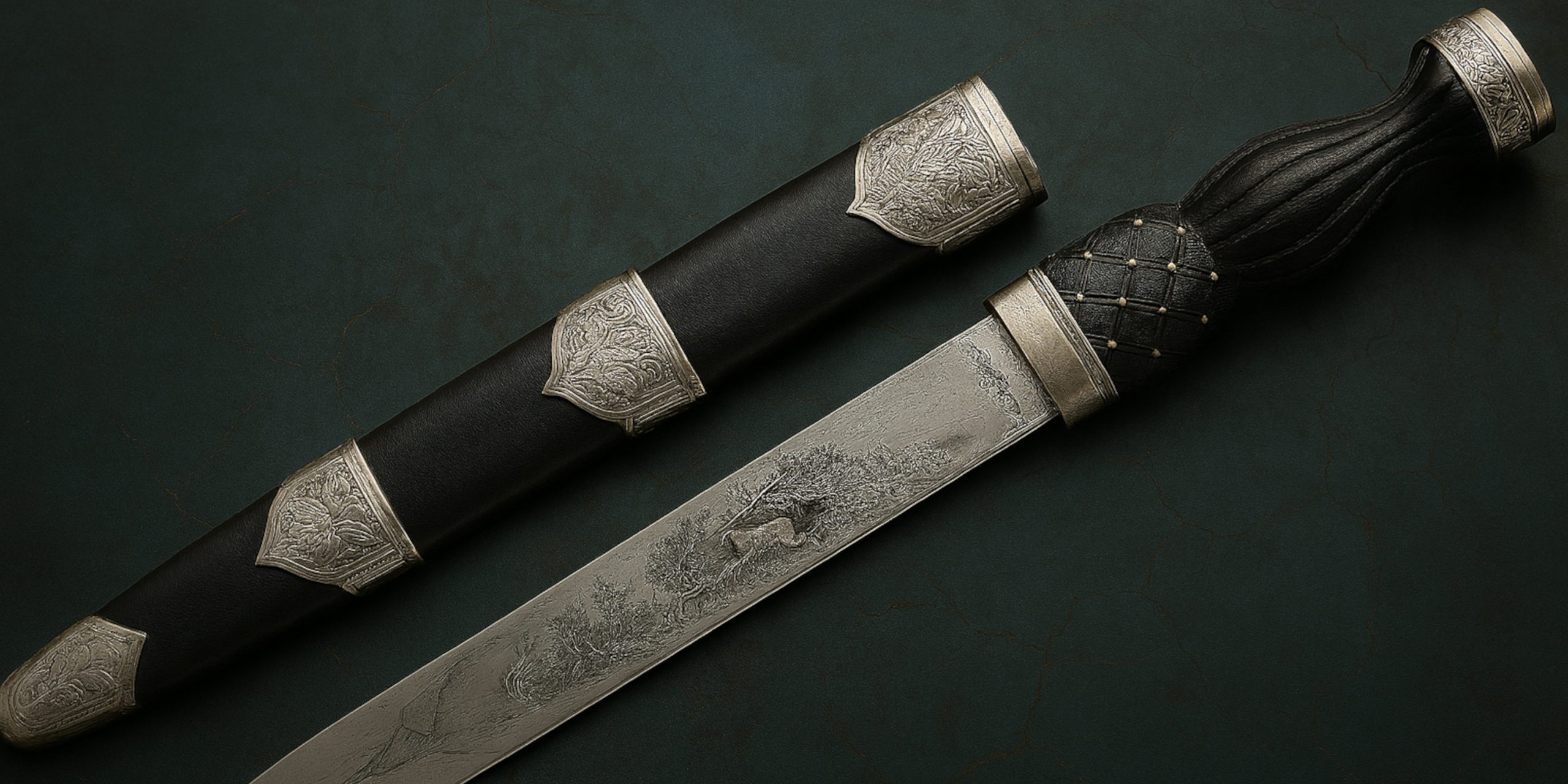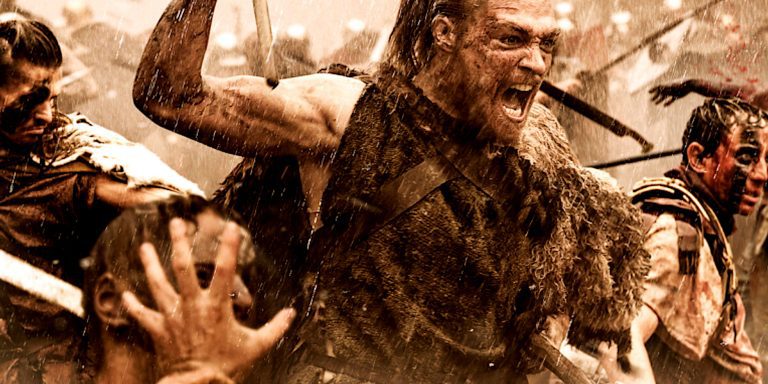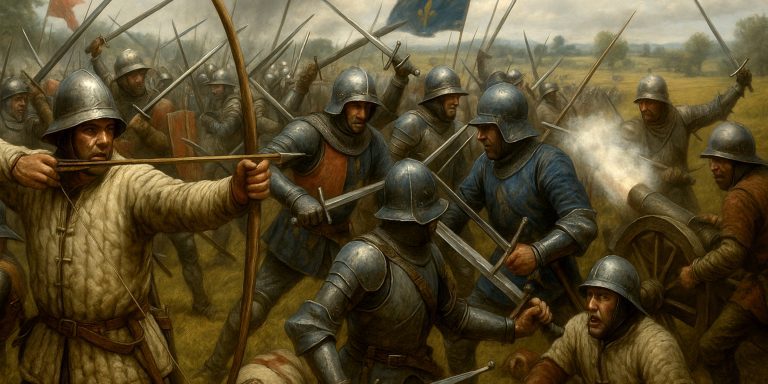
The Scottish dirk is a long-bladed thrusting dagger traditionally associated with Highland warriors. Far more than a sidearm, it carried symbolic and ceremonial importance, evolving from battlefield utility to a marker of cultural identity. With its roots in the 17th century, the dirk became a standard feature of Highland dress and saw continued use well into the 19th century.
Specification
| Feature | Description |
|---|---|
| Blade Length | 10 to 14 inches (25 to 36 cm) |
| Overall Length | 16 to 22 inches (40 to 56 cm) |
| Blade Type | Single-edged, straight or slightly curved |
| Hilt | Carved wood (often bog oak), later embellished |
| Pommel | Disk-shaped, sometimes silver-mounted |
| Guard | Minimal or absent in traditional designs |
| Sheath | Leather with metal fittings, often with side knives |
| Decoration | Celtic knotwork, thistle motifs, silver or brass mounts |
History and Evolution
The dirk evolved from the medieval ballock dagger, itself a descendant of earlier seax-like blades. After the Jacobite risings and the disarming acts in the early 18th century, the dirk was one of the few bladed weapons permitted as part of Highland dress, especially in military and ceremonial contexts.
Key stages in its evolution:
- 17th Century: Functional weapon used in clan warfare and skirmishes.
- 18th Century: Carried by Jacobite rebels and later adopted into Highland regiments of the British Army.
- 19th Century: Shifted towards a decorative role; officers’ dirks became ornate, with stones, silver, and etched blades.
- Modern Day: Still worn as part of full Highland dress, especially by pipers and ceremonial figures.
Advantages and Disadvantages
Advantages:
- Compact and easy to carry alongside larger weapons.
- Effective for close-quarter combat and thrusting.
- Cultural and ceremonial significance added prestige.
Disadvantages:
- Limited defensive use due to lack of guard.
- Less effective against heavy armour.
- Became largely symbolic and impractical in later periods.
Comparison with Similar Weapons
| Weapon | Key Differences |
|---|---|
| Bollock Dagger | Earlier English and Lowland Scottish equivalent; less refined and shorter. |
| Sgian-dubh | Smaller knife, worn in the sock, not used in combat; more for utility and dress. |
| Rondel Dagger | Favoured on the Continent; narrower and stiffer for puncturing armour. |
| Bollock Knife | Similar civilian version but less formalised in design and use. |
The dirk occupies a unique position as a battlefield weapon, a regimental badge, and a Highland fashion piece.
Legacy
The Scottish dirk is deeply embedded in Highland identity and British military history. Its transformation from a practical weapon to a ceremonial object mirrors the broader romanticisation of Highland culture during the Victorian period. Today, it is closely associated with military pipers, Highland dancers, and formal Highland dress.
Where to See
- National Museum of Scotland (Edinburgh): Multiple dirks from different periods, including Jacobite-era examples.
- British Museum (London): Fine examples with detailed carvings and military provenance.
- Highland Folk Museum (Newtonmore): Contextual display with Highland weaponry and dress.
- Regimental Museums such as those of the Black Watch and Royal Highland Fusiliers.
Collectors Guide Including Auction Prices
Collectors are drawn to the dirk for its craftsmanship, military history, and Highland heritage. Key factors affecting value include age, provenance, materials, and condition.
Collectible Types:
- Jacobite-era Dirks: Rare and highly prized, especially with clan or regimental provenance.
- Victorian Officers’ Dirks: Often ornate, valued for artistry.
- Modern Reproductions: Lower value but popular among re-enactors and ceremonial users.
Recent Auction Prices:
| Item Description | Estimated Price Range |
|---|---|
| 18th-century Highland dirk with bog oak hilt | £2,500 to £5,000 |
| Victorian officers’ dirk with silver mounts | £1,000 to £3,000 |
| Modern ceremonial dirk (sterling silver fittings) | £300 to £700 |
| Museum-grade dirk with military provenance | £5,000+ |
Collectors should be wary of forgeries, particularly pieces claimed to be from the Jacobite period but made or modified in the 19th century.
The Scottish dirk remains an enduring emblem of Highland identity and martial tradition. Whether viewed through the lens of history, craftsmanship, or military heritage, it stands as a distinctive and evocative blade.



